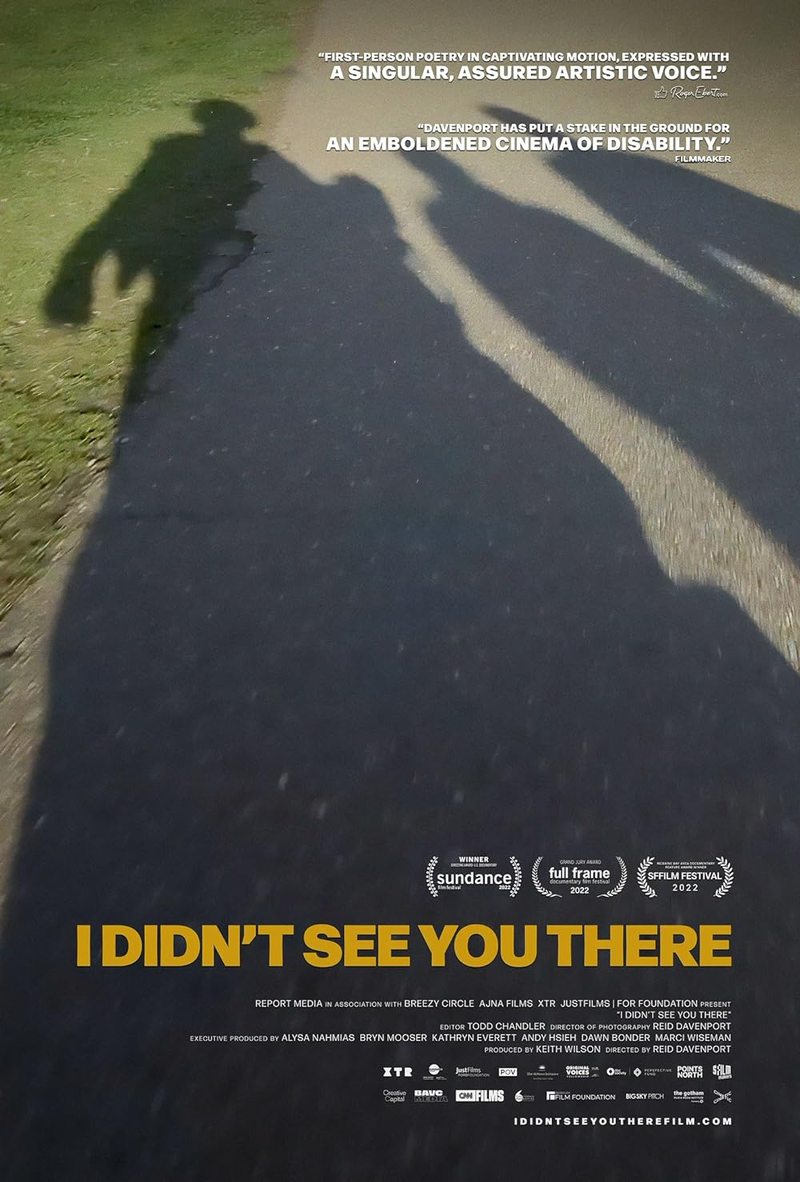I Didn’t See You There – An unconventional film
by Ishini Fernando

I Didn’t See You There is an award-winning (Golden Gate Award for Bay Area Documentary Feature and Truer than Fiction Award) and experimental 2022 documentary by Reid Davenport. Defying conventions of modern-day documentaries, the film refuses to use interview clips, re-enactments or even much dialogue. It is entirely narrated and shot by Davenport, with the camera often angled on his wheelchair or occasionally handheld, allowing viewers to see the world from his perspective. An article from The Guardian newspaper (January 11, 2023) states that Davenport has cerebral palsy.
When a circus tent goes up in his neighbourhood in Oakland, California in the beginning of the film, Davenport begins to reflect on the parallels between what he refers to as circus ‘freaks’ (historically atypical humans who were displayed and exploited to entertain paying customers) and those living with a disability in modern day. This exploration of past and present treatment of people with disabilities is a major theme throughout the film, even as Davenport visits his hometown in Bethel, Connecticut, a birthplace he shares with well-known showman P.T. Barnum.
Perhaps intentionally, nowhere in the documentary does Davenport reveal his cerebral palsy, instead letting viewers draw their own conclusions. Almost all of the film is shot in motion as he navigates day-to-day life in Oakland, showing the difficulties of getting around the city, sometimes having to take long detours or the odd alleyway to reach his destination and at other times dealing with the frustration of blocked ramps. At one point, Davenport explains that while Oakland is still decently accessible, most places are not, which remains a huge barrier to independent living for wheelchair users.
Davenport also captures the various reactions of people outside of his home, ranging from passers-by treating him like he is invisible to being overly mindful of him.
I Didn’t See You There places viewers in Davenport’s seat, allowing them to truly connect with him in the awkwardness and plain discomfort of his encounters with fellow citizens, the daily struggles with accessibility and the captured beauty of the city that can rarely be observed from a standing position. Raw and unapologetic in his shots and narrations, Davenport avoids the cliches of atypical representation often seen on television, and notably, keeps his lens towards the world rather than turning it on him. His documentary is a collection of relaxed shots and tense moments, and much like him, it is meant to be experienced rather than passively viewed.









